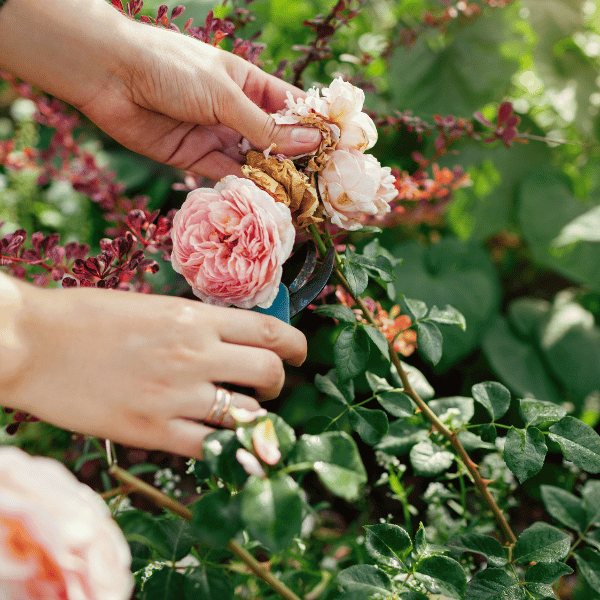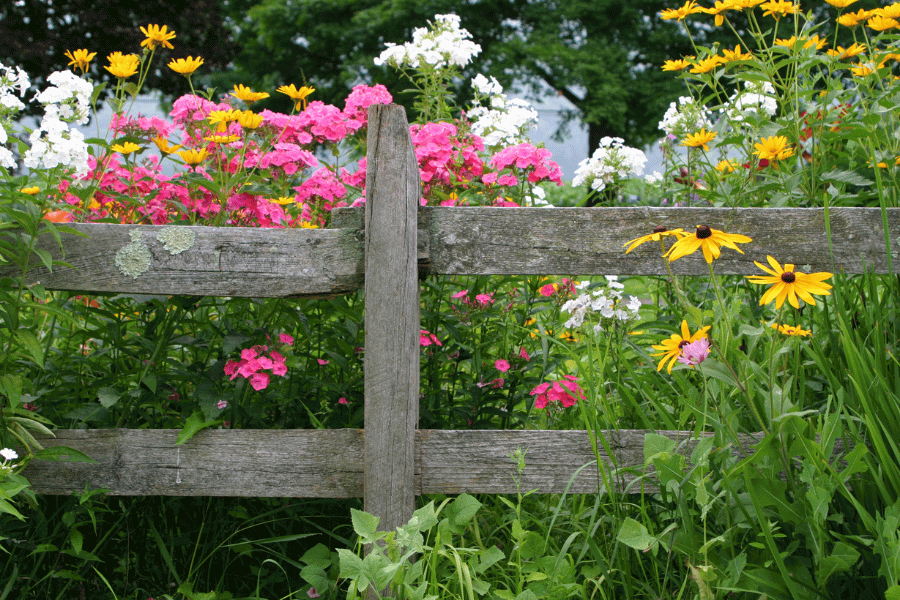Flowers are not only a source of natural beauty but also an essential part of our ecosystem. Whether in gardens, parks, or natural landscapes, flowers play a crucial role in pollination and attracting beneficial insects. To ensure the optimal health and aesthetics of your flower garden, deadheading—removing spent blooms—is a beneficial practice. Let’s explore the numerous advantages of deadheading annual and perennial flowers, from enhancing the appearance of your garden to stimulating vigorous growth and prolonged blooming.
Aesthetics and Visual Appeal: Deadheading flowers is primarily done to maintain a visually pleasing garden. By removing faded or wilted blooms, you promote a tidier and more attractive appearance. Regular deadheading keeps your flower beds looking fresh and vibrant, creating a visually appealing space that can be enjoyed by you, your family, and visitors.
Encourages Reblooming: One of the significant benefits of deadheading is its role in stimulating reblooming. Annual and perennial flowers produce flowers to complete their reproductive cycle. By removing spent blooms, you prevent the plant from diverting energy into seed production. Instead, the plant invests its resources into developing new buds and flowers, extending the blooming period and enhancing the overall floral display.
Prolongs the Flowering Season: Deadheading can significantly prolong the flowering season of both annual and perennial flowers. When you remove faded blooms, the plant remains in an active growth state, continuously producing new flowers. This prolongation of the flowering season allows you to enjoy the beauty and fragrance of your favorite blooms for a more extended period.
Prevents Self-Seeding and Invasive Spread: Some flowers have a tendency to self-seed and spread rapidly, potentially becoming invasive. Deadheading prevents self-seeding by removing spent flowers before they have a chance to mature into seed heads. This control measure helps maintain the desired balance in your garden, preventing certain plants from taking over and crowding out other desirable species.
Enhances Plant Health and Vigor: Regular deadheading contributes to the overall health and vigor of the plants. When flowers fade, they often attract pests or diseases. By removing these spent blooms promptly, you reduce the risk of pest infestations and the spread of diseases. Deadheading also eliminates potential breeding grounds for fungal  infections, ensuring that your plants remain healthy and disease-free.
infections, ensuring that your plants remain healthy and disease-free.
When a flower begins to wither, the plant starts directing its energy towards seed production. By deadheading, you redirect these valuable nutrients and resources to other parts of the plant, such as foliage development and root growth. This nutrient reallocation promotes overall plant strength, leading to healthier and more robust plants.
Encourages Compact Growth and Bushiness: Deadheading plays a role in promoting compact growth and bushiness in certain annual and perennial flowers. By removing spent blooms, you prevent the plant from focusing on seed production and instead encourage lateral branching. This lateral branching results in a fuller, denser plant with more flowers, creating a lush and appealing display.
Attracts Beneficial Insects: Flowers attract a variety of beneficial insects, including bees, butterflies, and other pollinators. Deadheading keeps your garden full of fresh, vibrant blooms that continue to attract these important pollinators. The presence of pollinators enhances biodiversity, supports ecological balance, and contributes to the overall health of your garden ecosystem.
Allows for Selective Pruning and Shaping: Deadheading provides an opportunity for selective pruning and shaping of your flower plants. By removing spent blooms, you can control the size and shape of the plant, ensuring it fits harmoniously within your garden design. This practice also allows you to remove any damaged or diseased parts, promoting healthier growth and maintaining an aesthetically pleasing form.
Encourages a Sense of Gardening Satisfaction: Lastly, deadheading can offer a sense of gardening satisfaction and fulfillment. The act of tending to your plants, removing spent blooms, and witnessing the subsequent growth and beauty can be deeply rewarding. Deadheading allows you to actively engage with your garden, fostering a deeper connection with nature and a sense of pride in your horticultural achievements.
Deadheading annual and perennial flowers provides a multitude of benefits, from enhancing the visual appeal of your garden to promoting vigorous growth and prolonged blooming. By regularly removing faded blooms, you not only maintain a tidy and attractive garden but also stimulate reblooming, prolong the flowering season, and divert nutrients and resources to the plant’s overall health. Additionally, deadheading prevents self-seeding, encourages compact growth, attracts beneficial insects, allows for selective pruning, and offers a sense of gardening satisfaction. Embrace the practice of deadheading, and you will reap the rewards of a flourishing and beautiful flower garden.
Perennials That Benefit from Deadheading
Daisy-like or broadflower blooms such as: Asters (Aster), Purple Coneflower (Echinacea), Shasta Daisies (Leucanthemum), Rudbeckia, Yarrow (Achillea), Blanket Flower (Gaillardia) and Beebalm (Monarda). These benefit from removing the spent blooms to keep appearances tidy.
Individual flowers: Daylilies (Hemerocallis), Peach-leaved Bellflower (Campanula persicifolia), Balloon Flower (Platycodon) and a few others. This group reacts well to deadheading their individual spent flowers while new buds on forming on the same stems.
Self starters: Perennials that self-seed and propagate themselves within the area can become overbearing if left without deadheading. This group includes: Columbine (Aquilegia), Sweet William (Dianthus barbatus), Common Yarrow (Achillea millefolium), Perennial Bachelor’s Buttons (Centaurea), Jacob’s Ladder (Polemonium).
Annuals That Benefit from Deadheading
Zinnias
Cosmos
Marigolds
Delphiniums
Hollyhocks
Marguerite Daisies
Geraniums
Petunias
Download Our Deadheading Annuals & Perennials Root Wisdom Information Sheet




